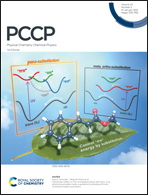A physico-chemical investigation of highly concentrated potassium acetate solutions towards applications in electrochemistry†
Abstract
Water-in-salt solutions, i.e. solutions in which the amount of salt by volume or weight is larger than that of the solvent, are attracting increasing attention in electrochemistry due to their distinct features that often include decomposition potentials much higher than those of lower concentration solutions. Despite the high solubility of potassium acetate (KAC) in water at room temperature (up to 25 moles of salt per kg of solvent), the low cost, and the large availability, the use of highly concentrated KAC solutions is still limited to a few examples in energy storage applications and a systematic study of their physical–chemical properties is lacking. To fill this gap, we have investigated the thermal, rheological, electrical, electrochemical, and spectroscopic features of KAC/water solutions in the compositional range between 1 and 25 mol kg−1. We show the presence of a transition between the “salt-in-solvent” and “solvent-in-salt” regimes in the range of 10–15 mol kg−1. Among the explored compositions, the highest concentrations (20 and 25 mol kg−1) exhibit good room temperature conductivity values (55.6 and 31 mS cm−1, respectively) and a large electrochemical potential window (above 2.5 V).



 Please wait while we load your content...
Please wait while we load your content...